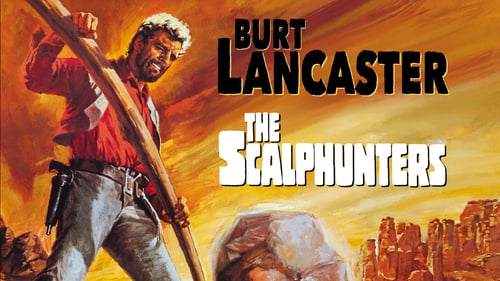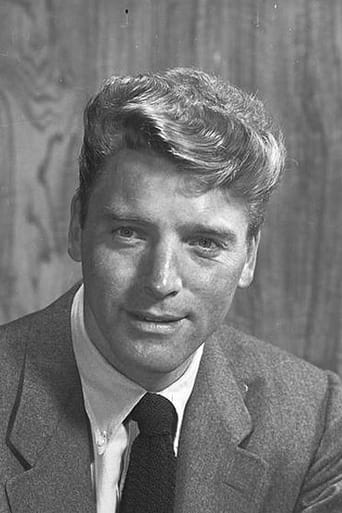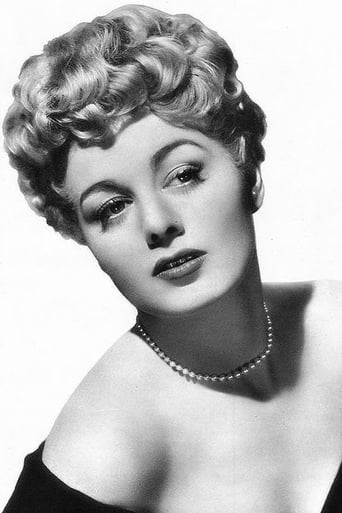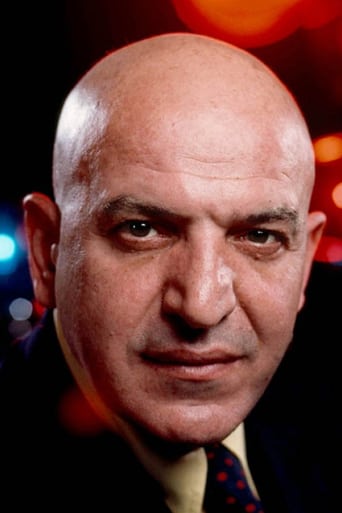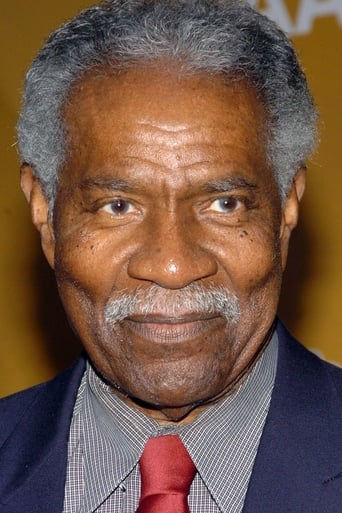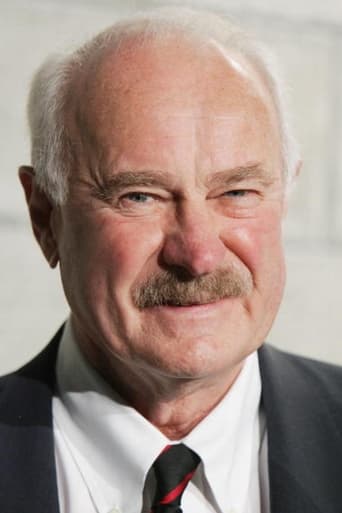Cubussoli
Very very predictable, including the post credit scene !!!
Stometer
Save your money for something good and enjoyable
SpuffyWeb
Sadly Over-hyped
Fluentiama
Perfect cast and a good story
gavin6942
Forced to trade his valuable furs for a well-educated escaped slave, a rugged trapper vows to recover the pelts from the Indians and later the renegades that killed them.Ossie Davis was nominated for a Golden Globe for Best Supporting Actor for his performance in the film. And, really, his appearance is the highlight of the film. As far as westerns go, it is rather disappointing. And the artwork makes it seem almost like an exploitation film, which it most certainly is not. The cast is good, but does not make the film as a whole all that great. Frankly, I am not sure why Shelley Winters was ever a star.Thanks to Kino Lorber, this film is available on DVD. I can't say it's the best thing they've released, but it probably isn't the worst.
MartinHafer
This is a film I really wanted to like. After all, some of the actors were very skilled and the characters they played had some wonderful qualities. Additionally, this movie would have been a great comedy or drama--too bad the writers and director had no sense about which they were going to make! I think the recent success of comedy-Westerns such as CAT BALLOU and THE HALLELUJAH TRAIL impacted this film--but these other films were consistent in their style, while THE SCALPHUNTERS sure wasn't.Burt Lancaster plays one of the less sympathetic roles of his career. Early on, his huge load of furs is stolen, of sorts, by a group of Indians. What actually occurred is that they took the furs and gave him an escaped Black slave--which Burt did NOT want nor need. He treated Davis mostly like a piece of property, not a man. Ossie Davis was fun to watch as this well educated Black man, though this was certainly an anachronism--as in most of the South, a Black slave who could read and write would have been hung, as it was against the law to educate a Black person (lest they learn about the real world or the inequity of slavery). To make this situation less believable, Davis knew quite a bit of Latin and about the world--making him smarter than at least 95% of White Americans at this same time in history.Speaking of time in history, it's very hard to figure out when this film was to have occurred. You know it MUST be pre-Civil War since there is slavery and yet the guns are all repeating rifles and pistols--something you would have had a hard time finding even by the end of the Civil War. Some early cartridge guns had been developed by about 1860, but they were very rare and unreliable and would have almost never been seen in the West. Despite this, you don't see any single-shot guns--only repeating rifles and pistols using cartridges that are circa 1870 and later. Plus, none of these repeaters seem to need reloading! Despite all these logical errors and anachronisms, there is a lot to like in the film--and lots of wonderful scenes. Davis' anachronistic character is very likable and he has many great lines. Lancaster, while a thoughtless jerk is also a pretty exciting action hero at times in the film. The relationship between these two is interesting and complex. Plus I liked seeing the relationship between Telly Savalas and Shelley Winters--their dialog was pretty funny at times and how Winters ended the film was rather satisfying.Unfortunately, all the scenes, when placed together, are a mess and just don't fit together well. Much of this is because the movie moves uncomfortably from action film to comedy--and it's hard to laugh at a comedy about slavery or the massacre of Indians! The best example of this is the ending of the film. After suffering through tons of abuse and ambivalence by Lancaster, Davis has a wonderful scene where he is about to leave Lancaster in the desert and ride off to Mexico for a happy ending--a well-deserved and very rewarding ending I might add. However, oddly, the film did NOT end here but when one for about another ten minutes--and then tried to give a comedic style ending that just didn't fit the film at all. Ending it with Lancaster tied up and Davis wandering off would have been perfect--dragging it on and having a macho mud fight for a laugh was just awful and totally destroyed the impact of the film as social commentary.
tedg
If you happen to be alive and watching films in the late 60s, you'd be immersed in a period richer than anything we have seen since, I think. People just seemed more receptive to fundamental reinvention where today its assurance we need.There are lots of obvious examples of this. Here's a much less obvious one, and it may be hard to see why.Superficially it is a slight project, a slim entertainment in a common form: a genre film that references the established notions of western justice that has in the standard interstices a story of racial justice earned. (You have to imagine that in those days it was commonly accepted that the black "man" had — by dint of intense perseverance — finally achieved a place at the table. Also, you have to place yourself in a place where the western was still taken seriously and without irony as the zone where American values were handled, reaffirmed.)Its not obvious today, because notions of race have since shifted. But this was a fairly radical film in its time: more so say than "Guess Who's Coming to Dinner," or "Lilies of the Field." The idea of weaving these two notions of justice together was pretty radical, and extremely ennobling. It was a special event then. Today, its old candy.And that's the power of this, knowing what it was and seeing how tepid the "message" is. Today, we're as likely to see the whore with the golden heart as mattering.Ted's Evaluation -- 2 of 3: Has some interesting elements.
Nazi_Fighter_David
"The Scalphunters" opens with an illiterate frontier fur trapper named Joe Bass (Burt Lancaster) refusing to trade his furs, with the Kiowa Indians, for a runaway field slave… But at the end, he is forced at gunpoint to do that and Bass finds himself, in one moment, the owner of Joseph Lee (Ossie Davis), an escapee from Louisiana, formerly of the Comanche tribe, until stolen by the Kiowas… Lee, an African—slave by employment, black by color—results one of the highest educated families in Louisiana, who can read and write… Lee's intention was to circle south, as far as Mexico, because the Mexicans have a law against the slavery trade… Bass' immediate plan was to catch up with the Kiowas and get back his pack horse and furs… But his plan soon failed when a band of scalphunters led by a dangerous double-crosser, Jim Howie (Telly Savalas) attack the poor Indians killing almost all of them and taking, by the way, Bass' property… Bass— a man who moves mountains to get what he wants— stampedes their wagons and makes the scalphunters' horses dangerous to ride… The sweetest, and in some ways the funniest moments come out when Bass talks to his horse… In one scene, he gets so excited, and turns back to his stallion saying: "By god, you have got an idea!" Telly Savalas makes Kojak a charmer, but in Pollack's film he is a psychopathic bounty hunter who slaughters a dozen Indians… Kate (Shelley Winters)—a cigar-puffing doxy qualified to do things to any man—is sick about her lover's wagon… She complains that she lives like a squaw… Kate's dream was to live like a lady in a fancy house with servants… Winters delivers the best line of the whole movie when she exclaimed at the end of the film: "What the hell? They're all men."Ossie Davis comes out with a real sense of humor… In one scene he explains to Kate the benefits of the common cactus, known to the Comanches as Maguey… He makes her believe that this plant was used in the ancient times by the Queen of Sheba to restore the natural oils to her beautiful blond hair… It was nice to see Nick Cravat in a modest role as one of Savalas' men… As you remember, Cravat was ideally cast as Lancaster's sidekick, Piccolo, in the flamboyant "The Flame and the Arrow" in 1950, a spoof of the Robin Hood genre, set against the castle battlements and banquets halls of medieval Lombardy


